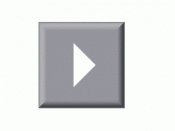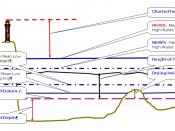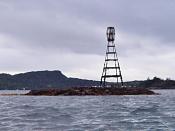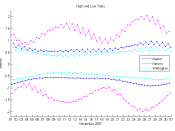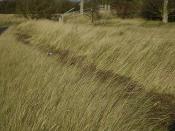Tides Long ago, scientists were studying tides and had discovered that the tide came in an hour later each day. They had soon realized that the moon came out later each day, at the same time as the tides. Since then scientists have linked the moon and tide. Scientists now know that the moon gives a small tug to all objects on the earth, a gravitational pull, but the objects on land aren't affected significantly. However when the moon's gravitational pull affects the water, tides are formed. The moon's gravitational pull today has tugged on the earth so much that the Earth has turned slightly oval; the moon stretched the globe out horizontally. The reason the tide is so much larger when the moon is out, is because, that part of the Earth is coming closer to the moon, affecting that side more so than the other side.
There is more than one type of tide, two of them are known as spring and neap tides. The sun also plays a factor in tides, although it does not pull on the earth like the moon does, it can affect it. Spring tides are when the moon and sun are either on the same side of the Earth at the same time, or when they are on opposites during the same time. Either way the tidal affects are the same, they tug the Earth out horizontally. A neap tide however is when the moon and sun make a ninety degree angle next to the Earth. In this case the Earth is still being tugged horizontally, but if looked at by the sun's point of view, the Earth seems like it is being pulled vertically.
